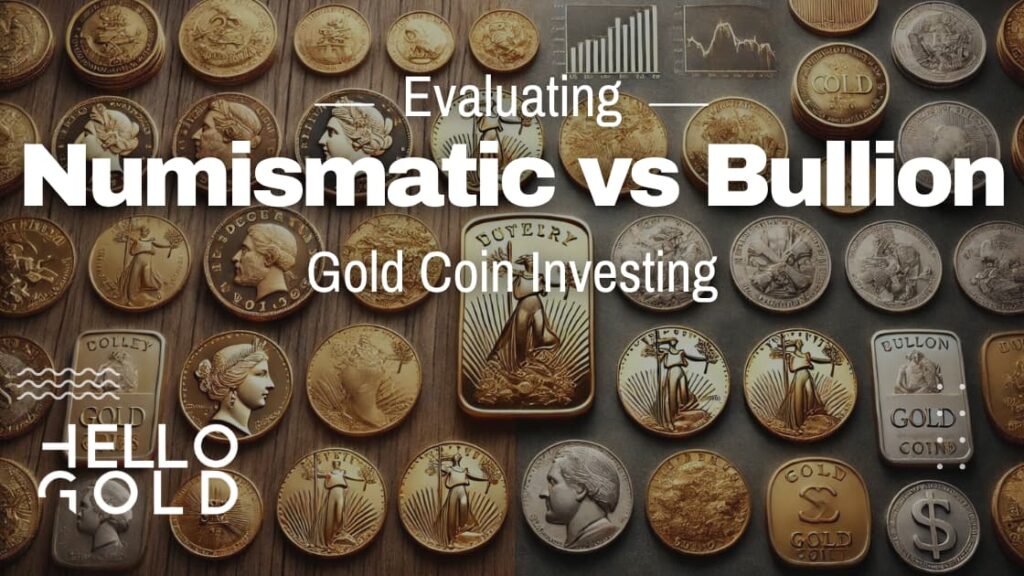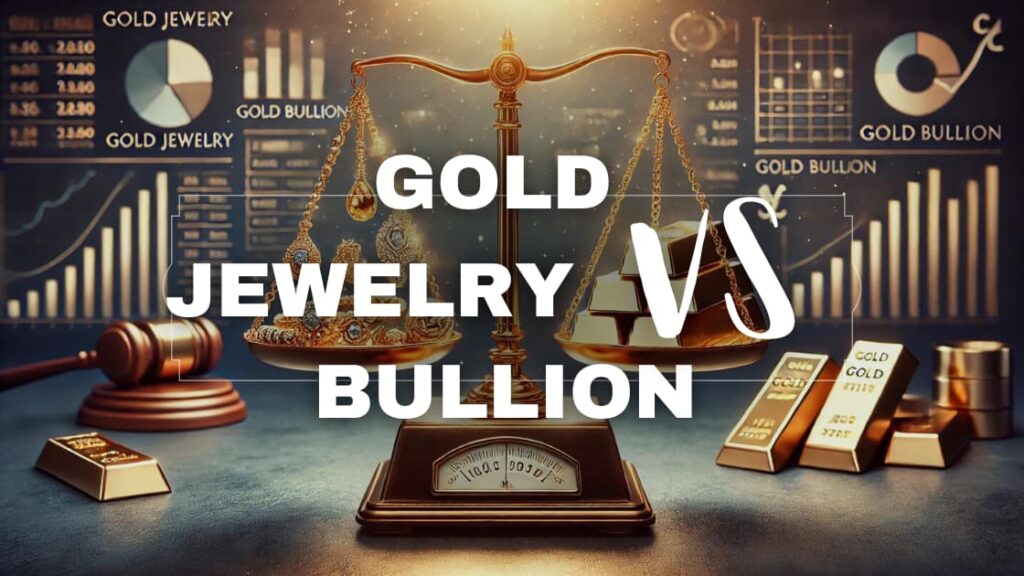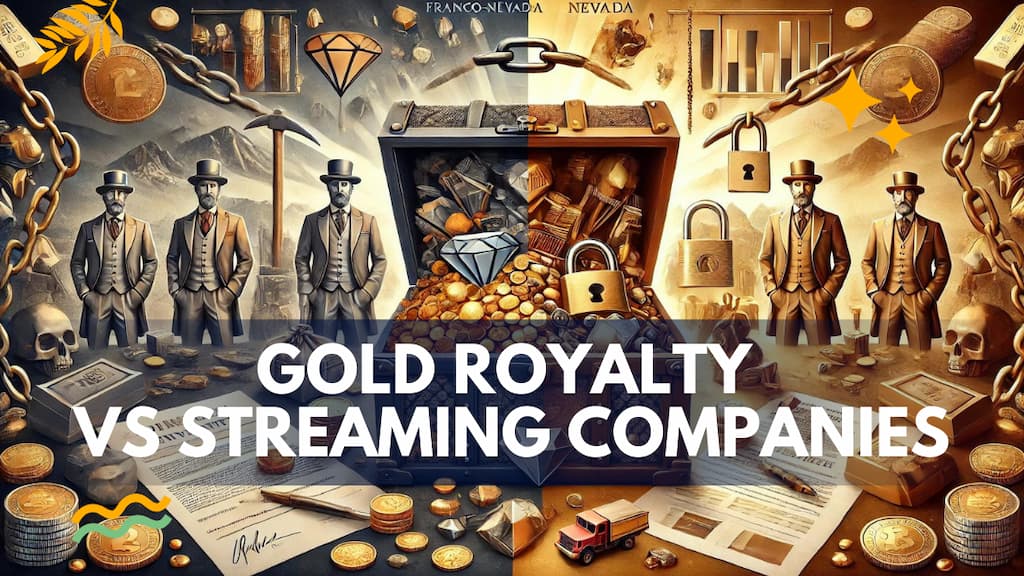Want to grow your money beyond stocks and bonds? Gold coins offer a unique investment choice.
Old coins with history behind them or gold bullion coins for their pure gold worth – both let you own real assets.
This article explains putting money into gold coins and how it could improve your investment mix. Read on to get valuable info into this different approach.
Understanding Numismatic and Bullion Gold Coins
When looking into gold coin investments, you’ll come across two main types: numismatic and bullion coins.
Each type has its own benefits and appeals to different investment strategies. Understanding the differences between these two is important for making smart decisions that match your financial goals.
Defining Numismatic Gold Coins
Numismatic gold coins are more than just precious metal; they’re pieces of history you can hold in your hand.
These coins get their value from a mix of factors beyond their gold content. Rarity plays a big role – the fewer coins available, the higher their potential value.
The condition of the coin is just as important, with expert grading services checking things like wear, shine, and overall state.
Historical importance adds another layer of value, with coins from key time periods or featuring notable designs selling for higher prices.
For example, take the Saint-Gaudens Double Eagle. Made from 1907 to 1933, this coin is known for its beautiful design and historical significance. Its rarity, especially the 1933 issue, has made it one of the most wanted coins in the numismatic world.
Similarly, the Liberty Head double eagle, made from 1849 to 1907, is valued for its long history and various rare dates within the series.
The numismatic market is complex and needs a deep understanding of these factors. Prices can change based on collector demand, market trends, and even the discovery of previously unknown coins.
This complexity is part of what makes numismatic investing both challenging and potentially rewarding.
The Fundamentals of Bullion Gold Coins
Bullion gold coins represent a more straightforward approach to precious metal investing.
These coins are valued mainly for their gold content, with their worth closely tied to the current spot price of gold.
The appeal of bullion coins lies in their standard quality and ease of trading.
Popular bullion coin series include the American Gold Eagle, Canadian Gold Maple Leaf, and South African Krugerrand. Each of these is made to exact standards of weight and purity.
For instance, the American Gold Eagle contains one troy ounce of pure gold, mixed with a small amount of copper and silver for strength.
This standardization ensures that bullion coins are easily recognized and traded worldwide.
The pricing of bullion coins is relatively clear.
You’ll typically pay a small extra amount over the spot price of gold, which covers the costs of making, distributing, and a modest profit margin for dealers.
This extra cost is generally lower than what you’d see with numismatic coins, making bullion an attractive option for investors focused purely on gold ownership.
Key Differences at a Glance
To help you understand the main differences between numismatic and bullion gold coins, consider the following comparison:
| Aspect | Numismatic Coins | Bullion Coins |
|---|---|---|
| Primary Value Basis | Rarity, historical significance, aesthetic appeal | Gold content (weight and purity) |
| Market Demand | Collectors, investors interested in historical value | Investors focused on precious metal ownership |
| Liquidity | Lower, dependent on collector interest and market conditions | Higher, widely recognized and easily traded |
| Pricing | Variable, based on multiple factors beyond gold content | Stable, closely follows gold spot price with minor premiums |
| Investment Appeal | Potential for high returns, higher risk, requires specialized knowledge | Stable store of value, lower risk, more predictable performance |
Each type of gold coin fits different investment philosophies and risk tolerances.
Numismatic coins are well-suited for those who appreciate the historical and artistic aspects of coin collecting and are willing to invest time in understanding the complexities of the numismatic market.
These investors should be ready for potential price changes and the need for expert authentication and grading services.
Bullion coins, on the other hand, are ideal for investors seeking a straightforward way to own physical gold.
They offer protection against inflation and economic uncertainty without the added variables of the collector’s market.
Bullion investors benefit from easier buying and selling processes and more predictable pricing based on the global gold market.
Investment Characteristics: Numismatic vs Bullion
When looking at different investment options, you need to think about the unique features of numismatic and bullion coins. These two types of coins have different pricing patterns, ease of buying and selling, and market sizes, which affect how good they are as investments.
Price Dynamics and Valuation
Numismatic coin pricing is based on rarity, condition, and collector demand. The value of a numismatic coin is decided by its historical importance, how it looks, and how many coins are available. Professional grading is very important in figuring out a numismatic coin’s value, as it gives a standard way to check a coin’s condition and realness.
On the other hand, bullion coin pricing is tied to spot gold prices and extra costs. The extra cost on a bullion coin is affected by minting costs, dealer profits, and supply and demand.
The link between bullion coin prices and spot gold prices is simple: when the spot gold price goes up, the value of a bullion coin also goes up.
However, the premium added to a bullion coin can change depending on market conditions. For example, if many people want to buy bullion coins, dealers might charge higher premiums, making the overall price of the coin go up.
On the flip side, if not many people are buying, dealers might lower their premiums to try to sell more.
Liquidity Considerations
When it comes to buying and selling numismatic coins, you face some unique challenges. The market for rare coins is often difficult to navigate swiftly, making it tough to find buyers. Even when you find a buyer, the process of selling can take a long time and cost a lot.
In contrast, the global market for bullion coins offers greater liquidity, with more buyers and sellers. This makes it easier to trade bullion coins, taking less time and costing less.
However, even in the bullion coin market, how easy it is to buy and sell can change depending on the specific coin and market conditions.
For example, some bullion coins might be made in smaller numbers or be less popular, making them harder to sell.
In these cases, you might have trouble when trying to sell these coins quickly or at a good price.
Market Size and Depth
The numismatic coin market is smaller and more specialized compared to the bullion coin market.
The main players in the numismatic coin market include collectors, dealers, and auction houses.
The market’s size and limited number of people involved can cause prices to change a lot, making it important for you to be careful when investing in numismatic coins.
In contrast, the bullion coin market is bigger and more diverse, with a wider range of people involved. This bigger market size helps keep prices more stable and makes investments safer.
The bullion coin market’s size also makes it harder for anyone to manipulate prices, reducing the risk of prices being artificially changed.
Risk Assessment: Navigating the Golden Waters
Investing in numismatic and bullion coins can be exciting, but it’s important to understand the risks involved. Let’s take a closer look at the possible challenges you might face and how to protect your investment.
Market Volatility and Price Fluctuations
The value of both rare collectible and precious metal coins can change quickly, often in response to economic factors.
Numismatic coins, with their added historical and collector value, can be especially unstable.
During economic downturns, the market for these rare coins can dry up quickly as collectors spend less. On the flip side, during good times, prices can rise sharply as enthusiasts compete for prized pieces.
Bullion coins, while generally more stable, aren’t safe from market swings. Their prices closely mirror the current market value of gold, which can fluctuate based on global economic conditions, political events, and currency movements.
For example, during the 2008 financial crisis, gold prices surged as investors sought safe havens, boosting the value of bullion coins. However, this also meant that those looking to buy gold during this time had to pay more.
It’s worth noting that while bullion coins tend to move in step with gold prices, numismatic coins don’t always follow the same pattern. A rare coin’s value might increase even when gold prices are falling, or vice versa, depending on collector demand and other factors specific to that coin.
Authenticity and Fraud Risks
One of the biggest risks in coin investing, especially with numismatic coins, is the potential for fraud.
Counterfeiters have become increasingly clever, using advanced techniques to produce fake coins that can fool even experienced collectors.
This is why checking for authenticity is crucial.
For numismatic coins, professional grading and certification services like NGC (Numismatic Guaranty Corporation) or PCGS (Professional Coin Grading Service) are very valuable.
These organizations employ experts who carefully examine each coin, checking its authenticity and assessing its condition. They then seal the coin in a tamper-evident holder with a unique certification number.
This process not only helps ensure you’re getting what you paid for but can also increase the coin’s marketability.
Bullion coins, while less likely to be counterfeited due to their lower premiums, aren’t safe from fraud. However, many modern bullion coins include anti-counterfeiting features.
For instance, the Canadian Gold Maple Leaf includes a tiny engraved maple leaf mark, visible only under magnification, as a security feature.
The American Gold Eagle uses advanced striking techniques that result in sharp, crisp details that are hard to copy.
Regardless of whether you’re buying numismatic or bullion coins, always purchase from trusted, established dealers.
These professionals have the expertise to spot fakes and the integrity to stand behind their products.
Remember, if a deal seems too good to be true, it probably is.
Storage and Insurance Challenges
Once you’ve bought your coins, keeping them safe becomes very important. Proper storage is crucial, especially for numismatic coins where condition directly impacts value.
Exposure to air, humidity, and temperature changes can all harm a coin’s condition over time. Even seemingly minor issues like fingerprints can significantly reduce a coin’s value.
For valuable numismatic collections, consider professional storage solutions.
Many banks offer safe deposit boxes, and there are specialized storage facilities designed specifically for precious metals and collectibles.
These facilities often provide climate-controlled environments and top-notch security systems.
If you prefer to keep your coins at home, invest in a high-quality safe. Look for one that’s fire-resistant and securely anchored to prevent theft.
For numismatic coins, use non-reactive holders or albums designed specifically for coin storage.
Insurance is another crucial consideration. Standard homeowners or renters insurance policies often have low limits for coin collections, if they cover them at all.
For significant collections, you’ll likely need a separate policy or rider. These specialized policies can be expensive, but they provide crucial protection for your investment.
When insuring your collection, accurate valuation is key. Keep detailed records of your purchases, including photographs and any certification documents.
For numismatic coins, regular professional appraisals are important as values can change significantly over time.
Remember, whether you’re storing your coins at home or in a facility, being discreet is important. The fewer people who know about your collection, the better.
Return on Investment: Analyzing Profit Potential
When it comes to gold coin investments, understanding the potential return on investment (ROI) is crucial. Let’s look into the past performance, wealth protection aspects, investment timeframes, and tax impacts of both numismatic and bullion coins.
Historical Performance of Numismatic Coins
Numismatic coins have shown impressive long-term growth trends, driven by factors like rarity, historical importance, and collector demand.
Consider the iconic American gold piece from the early 20th century, for instance. These coins, originally sold for around $20 in the early 1900s, can now sell for hundreds of thousands of dollars.
This shows the potential for “generational” returns in rare coin investing.
However, investors should recognize that such returns are not guaranteed.
The world of rare coins is intricate and shaped by numerous variables, including overall economic conditions and changing collector interests.
While some coins have seen huge price increases, others have stayed the same or even decreased in value.
Success in this market requires deep knowledge, careful selection, and often, a lot of patience.
Bullion as a Wealth Preservation Tool
Gold bullion coins have historically done well during times of high inflation, making them a favored choice for wealth protection. Unlike stocks and bonds, bullion coins offer a physical asset that can diversify your portfolio and potentially lower risks associated with market downturns.
A prime illustration occurred in the wake of the 2008 economic downturn, when the value of gold skyrocketed as people flocked to safer investments, showing how bullion can act as a reliable store of value when traditional markets struggle.
However, it’s important to note that while gold can be a stabilizing force in a portfolio, it’s not immune to price changes. The gold market can be influenced by factors such as global economic conditions, currency movements, and world events.
Timeframes and Investment Horizons
The timeframe for holding numismatic coins to make profitable returns can be quite long, often spanning decades. These coins benefit from long-term holding, allowing for growth driven by increasing rarity and historical value.
However, this extended timeframe also means that your money is tied up for a significant period, which could present missed opportunities elsewhere.
In contrast, bullion investments can be more flexible. Short-term strategies might take advantage of market changes, while long-term holdings can serve as a stable hedge against economic instability.
Timing, however, remains crucial for both types of investments. Buying during low periods and selling during peaks can significantly impact overall returns.
An important consideration is that the liquidity characteristics of collector and pure gold coins play a role in determining best investment timeframes. The higher market fluidity of bullion coins allows for more flexibility in buying and selling points, while the lower liquidity of numismatic coins often requires a longer-term view.
Tax Implications: Uncle Sam’s Share of Your Gold
Understanding the tax implications of gold coin investments is crucial for accurately assessing your potential returns. Tax considerations differ significantly between numismatic and bullion coins, and these differences can have a big impact on your net profits.
Profits from selling numismatic coins are typically subject to the collectibles tax rate, which can be higher than standard capital gains rates. This higher rate reflects the unique nature of these investments and their potential for significant growth.
However, there are strategies to potentially lower this tax impact. For instance, donating rare coins to charitable organizations can provide tax benefits while supporting causes you care about.
In contrast, bullion coins are classified as capital assets. Profits from their sale are subject to capital gains tax, with different rates for short-term (held for less than a year) and long-term (held for more than a year) gains.
This treatment can be more favorable, especially for long-term investments.
It’s also worth noting that bullion coins can be included in certain types of retirement accounts, such as Gold IRAs. This can offer potential tax-deferred growth, adding another layer to consider in your investment strategy.
Regardless of which type of coin you invest in, maintaining a comprehensive log of your transactions is crucial.
Accurate reporting of these acquisitions and disposals is essential to avoid potential issues with tax authorities.
Consider talking with a tax professional who has experience with precious metal investments to ensure you’re making the most tax-efficient decisions possible.
Navigating the Marketplace: Where and How to Buy
The gold coin market offers unique chances and challenges for investors.
To do well in this area, you need to know where to buy, how to check sellers, and what safety steps to take.
Let’s look at the key parts of making smart gold coin purchases.
Finding Reputable Dealers and Auction Houses
Choosing a trustworthy dealer is very important when investing in gold coins.
Look for memberships in professional groups like the Professional Numismatists Guild (PNG) or the American Numismatic Association (ANA).
These memberships show a commitment to ethical standards and professional behavior.
For rare coins, big coin shows and auctions offer valuable chances. Events like the World’s Fair of Money and the Long Beach Expo bring in established dealers and experienced collectors.
These events let you look at coins directly and talk face-to-face with sellers, which can be very helpful in building trust and checking if coins are real.
When thinking about buying bullion, both online and local dealers have their good points.
Online platforms often have a wider choice and competitive prices, while local dealers offer the advantage of in-person checks and immediate transactions.
The choice between these options depends on what you prefer and think is important.
Investors should watch out for certain warning signs when dealing with coin sellers.
Sales tactics that push you too hard, unclear information about a coin’s history, and deals that appear suspiciously advantageous are all reasons to be careful.
Be wary of sellers who don’t want to provide paperwork or have a questionable online presence.
Due Diligence in Coin Purchases
Before finishing a rare coin purchase, it’s important to ask relevant questions.
Ask about where the coin came from, if it’s been certified, and what the seller’s return policy is.
Understanding these things can really help you make your decision.
While certificates of authenticity provide some assurance, they’re not perfect.
It’s advisable to verify a coin’s legitimacy through respected third-party grading services like the Numismatic Guaranty Corporation (NGC) or Professional Coin Grading Service (PCGS).
These organizations offer professional grading and encapsulation, adding an extra layer of security to your investment.
For bullion coins, it’s crucial to check the seller’s credentials. Look for approval from recognized industry groups and read customer reviews.
Trustworthy sellers are usually open about their business practices and give detailed information about their products.
Leveraging Technology in Coin Investing
The digital age has brought valuable tools for gold coin investors. Online resources such as price tracking websites and market analysis reports offer up-to-date data on market trends, helping you make more informed decisions.
Mobile apps have also changed the way we check and value coins.
Apps like PCGS CoinFacts and NGC’s Coin Details give comprehensive information on various coins, letting you assess value and authenticity on the go.
This technology is particularly useful when evaluating coins at auctions or from private sellers.
Virtual coin shows and online auctions have expanded buying options, offering convenience and access to a global market.
However, these platforms also have their own challenges. It’s crucial to use trusted sites and carefully review their buyer protection policies before making transactions.
Blockchain technology is emerging as a potential game-changer in tracking where coins come from.
By providing a clear and unchangeable record of a coin’s history, blockchain could significantly reduce the risk of fake coins entering the market.
While still new, this technology looks promising for improving security and trust in coin transactions.
Closing Comments
Gold coins can improve your investment mix beyond stocks and bonds. Collector coins offer historical value, while bullion coins give pure gold content. Each type has special benefits and risks.
Learn the differences between coin types, market movements, and key things like realness and storage. Also, think about tax effects on your profits.
Start small with buys from trusted sellers. Keep gold coins as part of your whole investment plan, not all of it.
Take action now: find good dealers, plan your budget, and buy your first gold coin to grow your wealth.











